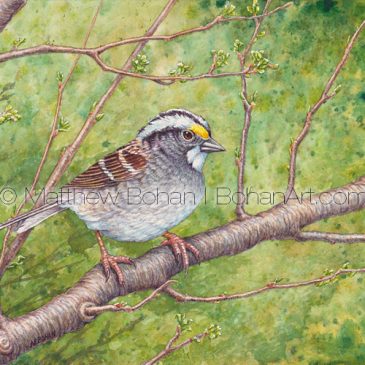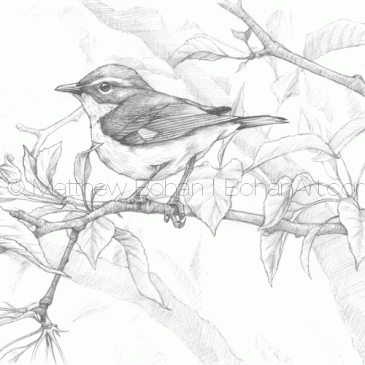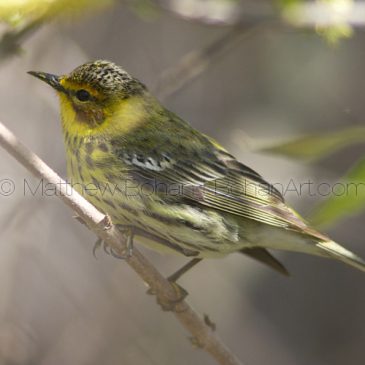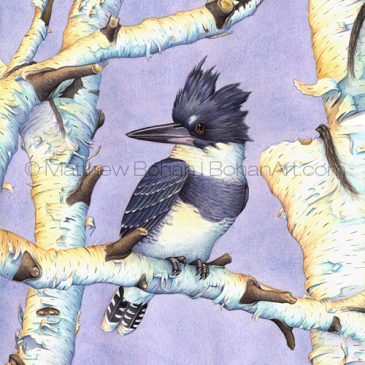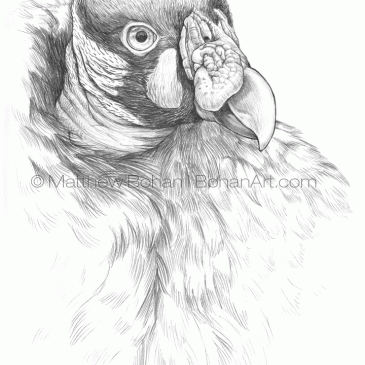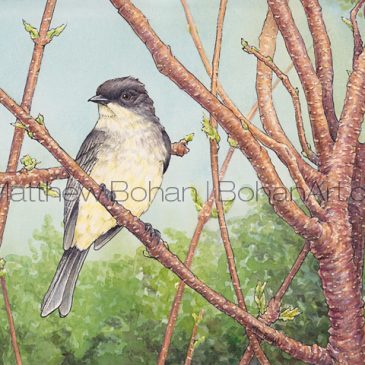Male White-throated Sparrow Painting: Transparent Watercolor & Time-lapse Video
I think that I last painted one of these when I was about 12. It has been on my “To Do” list for quite a while because they are such charming birds. I look forward to the White-throated Sparrows return every spring. … Continued
Female Black-throated Blue Warbler Pencil Sketch p70
Black-throated Blue Warblers are gorgeous birds. As is typical with most birds, the males are the the real show-stoppers, with these boasting stark white, deep black and bright blue. The females are fairly drab by comparison, but like Wood Ducks, once … Continued
May Birding Trips
I never get much painting done in May. With so many spring migrants moving through Michigan, we spend all of our spare time looking for birds. We did a few quick trips to Ottawa NWR and Magee Marsh Wildlife Area (aka Crane Creek) … Continued
Male Dark Phase Dimorphic Jumping Spider p69
This Spring has been great in Michigan. Our family keeps a running yard list of new migrants as they arrive. We also keep our eyes peeled for other early migrants and animals coming out of hibernation, like snakes, frogs, toads and … Continued
Throwback Thursday–Blackburnian Warbler on Black Cherry (Transparent Watercolor on 140lb HP Paper 7.5 x 7.5 in)
My wife’s favorite warbler is the Blackburnian. Its hard not to be won over by the beautiful “fire throat.” I’m looking forward to seeing some this spring!
American Robin on Crabapple Tree Painting: Transparent Watercolor & Time-lapse Video
I suppose this is truly a Michigan painting, since it combines our state bird and state flower in one work of art. I really enjoyed working on this project. Robins are common enough to be overlooked by most people, but I try … Continued
Chipping Sparrow Painting: Transparent Watercolor and Time-lapse Video
Seeing the first Chipping Sparrow each spring puts a big smile on my face. These little guys always seem to be happy little bundles of energy. I’m sure they have nested on our spruce trees at some point, but I’ve … Continued
Throwback Thursday: Belted Kingfisher on Birch
Around our house we call this painting the “Birch Perch.” This one has a bit of a history. I like the painting, but every time I look at it I feel a little sick to my stomach. Why? Here’s the “Readers Digest” version of … Continued
King Vulture – Pencil Sketch p68
The first time I laid eyes on a king vulture I thought it was one of the most spectacular birds I’d ever seen. Of course, with the shades of gray in this sketch, you kind of miss out on its stunning color! In actuality … Continued
Eastern Phoebe on Staghorn Sumac: Transparent Watercolor and Ink PLUS Time-lapse Video
Some birds just seem to have a lot of natural charm. The Eastern Phoebe definitely falls into that category for me. Phoebes, like American Robins, are fairly tolerant of humans and will nest near houses, sheds and decks. My mother-in-law, who … Continued

